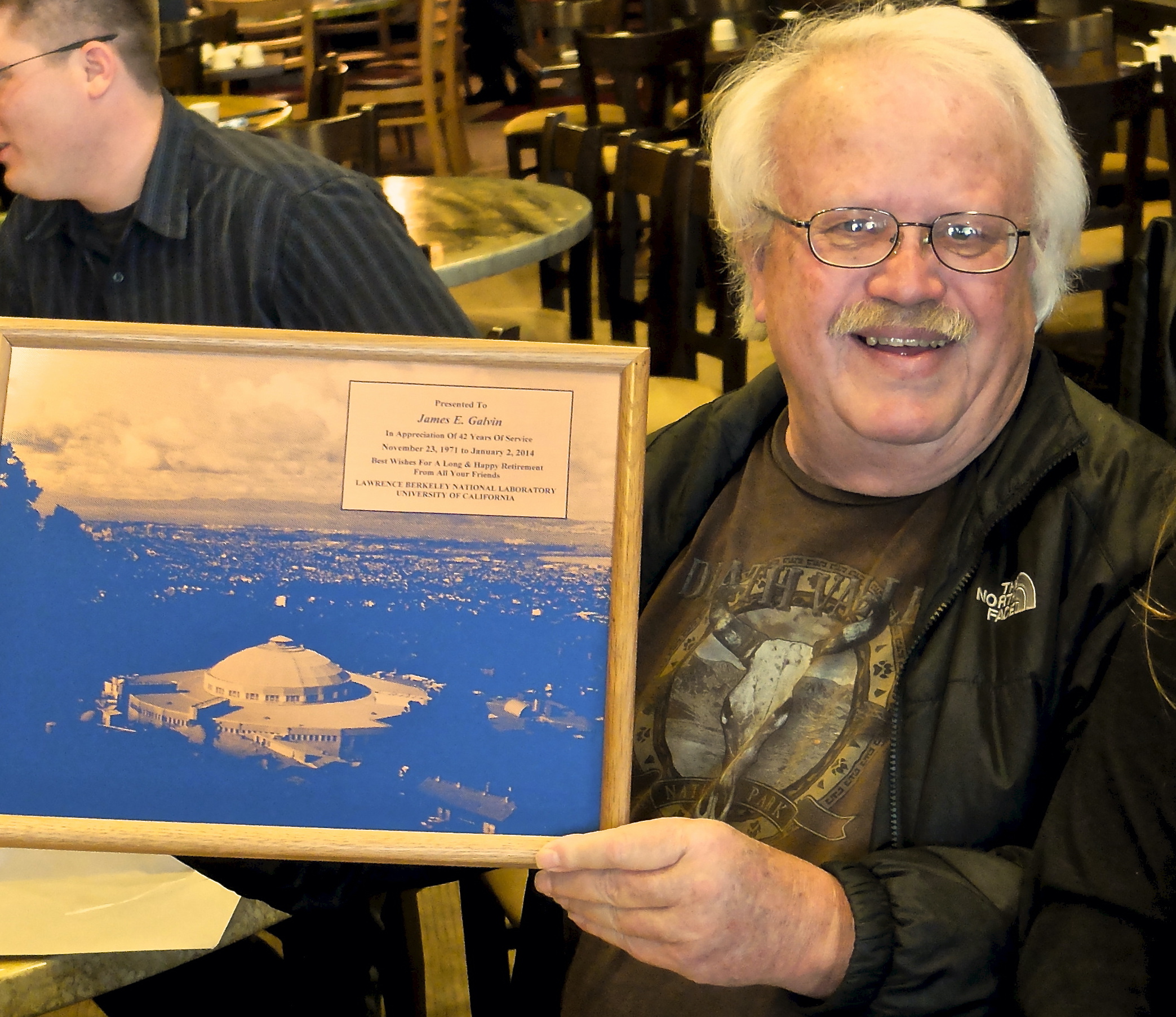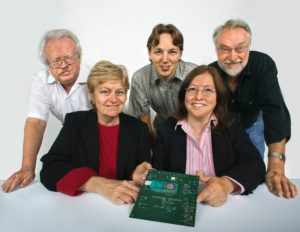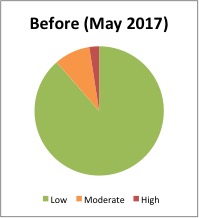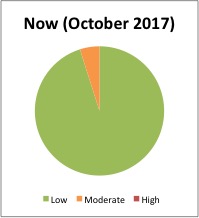Add ‘EG Meetings’ calendar for future All Hands Meetings
Division All Hands Meetings
In Remembrance of James (Jim) E. Galvin, 1945 – 2021
By Will Waldron, Joseph Chew and Kathy Bjornstad
James (Jim) E. Galvin, Sr. Electronics Engineering Associate, in Berkeley Lab’s Engineering Division, passed away March 3, 2021 at age 76.
Even at a lab known for long careers and for the invaluable technologists and engineers who help make team science happen, Jim’s accomplishments and dedication stood out. Across 42 years of service at the Lab, (and he continued as a retired affiliate part time, over the course of the past 7 years), he contributed to efforts that ranged from energy-efficient lighting to neurons on a chip. He was associated longest and most closely with ion-source development and applications in ATAP’s predecessor, the Accelerator and Fusion Research Division.
Jim’s contributions in retirement continued as he assisted the Ion Beam Technology Program, the NDCX-II heavy-ion accelerator facility, and the ALS Upgrade Project. Over the last several years, Jim’s contributions have been critical to the MOSFET-based inductive voltage adder pulsers used to drive the stripline kickers that will be crucial to ALS-U.
It was the culmination of a career that began in 1971, when he was recruited to work on a team led by another Berkeley Lab engineering legend, Bill Baker, that was developing neutral-beam injection systems for heating and plasma confinement in magnetic fusion energy experiments. Jim’s other early efforts included helping develop ion sources for the SuperHILAC, a heavy-ion linear accelerator famed as the discovery site of several elements.
Jim developed broad experience with RF and pulsed electronics as well as with careful measurement techniques—an invaluable skill set at an accelerator lab. He also amassed a vast collection of microscope hardware, light calibration equipment, and electronics calibration equipment, which he used to help many groups take high-quality measurements.
His interest in optics led him to the Windows and Daylighting Group in what was then the Energy and Environment Division, which needed precision measurements of light. Among other contributions, he was an early adopter of high dynamic range (HDR) techniques, now familiar in consumer products but then at the cutting edge.
Patterned Arrays of Neurons on CCD Chips
The Neural Matrix CCD team of (l-r) James Galvin, Eleanor A. Blakely, Kathleen A. Bjornstad, Chris J. Rosen, Ian G. Brown, (not pictured Othon Monteiro) 2005. (Berkeley Lab/Roy Kaltschmidt)
In a crossover from his usual work for Ian Brown in the Plasma Applications Group, he also contributed his imaging skills to Life Sciences Division researchers with the Neural Matrix CCD. A spinoff of the group’s work on biocompatible diamondlike-carbon (DLC) coatings, it enabled biologists to learn how neurons in the human nervous system communicate. Other potential uses for this technology include cultivating interconnected nerve cells for testing drugs, or for sensing toxins, and someday it may even play a role in restoring the use of limbs and eyesight. The development was honored with an R&D 100 Award in 2005 and one of the five patents on which he was a co-inventor.
Jim had particular expertise in designing low-noise instrumentation and RF amplifiers. His career spanned the years from analog to the advent and growth of digital technologies. The latter became more and more prominent, and he eagerly embraced these new developments. He became a prolific designer of a wide variety of printed-circuit boards for many applications, from early field-programmable gate array (FPGA)-based digital electronics to custom high-voltage switching electronics and diagnostics.
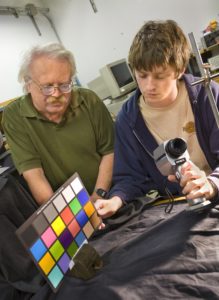 Jim (l.) as mentor, making calibrated light measurements with Center for Science and Engineering Education student Michael DeChenne, 2008 (Berkeley Lab/Roy Kaltschmidt)
Jim (l.) as mentor, making calibrated light measurements with Center for Science and Engineering Education student Michael DeChenne, 2008 (Berkeley Lab/Roy Kaltschmidt)
Jim’s professional interests in optics and imaging, as well as his friendliness and willingness to help others, carried over into his personal life, where he introduced many people to the wonders of science. Not even the urban lights and frequent cloud cover of the inner Bay Area deterred him from sidewalk astronomy and the accompanying public outreach at his home in the Watergate Emeryville complex. He also helped organize art shows at the Watergate’s Clipper Club, and was known for generously sharing his time, expertise, and high-tech tools and toys.
The dark nighttime skies, clear dry air, and unique scenery of Death Valley saw several of Jim’s interests in full flower. Spending one or two months there every winter, he became the unofficial scientist-in-residence of the Stovepipe Wells Hotel, showing other visitors the secrets of the night sky or switching to a microscope to examine minerals.
As Jim recalled, “One night I had my telescope set up on the moon, and many people stopped by. One said she had a group of geology students, camping across the road, and asked, could they look. Of course! So the next night they started arriving. There were 45 high school students. There were clouds, but I had brought a differential interference contrast or Nomarski microscope, so I showed them protozoa and bacteria from Salt Creek. I also showed them crystals with polarized light. The next night was clear, so I showed them the moon and the pics I had taken of the Orion Nebula and the Andromeda Galaxy. They were amazed. As they were leaving a few days later I went over to their camp and gave their leader some of my postcards. She thanked me, and I got a round of applause. They wanted to make sure I would be there next year.”
By day as well as night, Death Valley was also an inspiring location for one of his other passions, photography, including large-format work. Several of his pictures are on display at the hotel. So many people have expressed their appreciation of working with Jim and his love of science and discovery. A life well lived, and he will be missed by many.
https://sites.google.com/a/lbl.gov/lbnl-photography-club/_/rsrc/1541537318755/winners/badwater.png
“Badwater,” a 2013 LBNL Photography Club winner. (Jim Galvin)
Ergo Improvements Make Positive Impact
In FY17, computer ergonomic (ergo) exposure was the second highest recordable injury, accounting for 22% of the Laboratory’s recordable injuries. To address this problem head on, the Engineering Division Ergo Advocate Team has implemented a proactive approach to reducing ergo risks in the division.
 Each week since June, the ergo duo, Eva Pan and Marshall Granados, review ergonomics reports to prioritize and target employees identified as high and moderate risk for ergonomic injury. Starting with the individuals at the highest risk level and with the highest number of ergo issues, they initially conduct drop-in visits for a casual ergo safety discussion and to offer recommendations to reduce ergo risk. Working as a team, they are able to discuss issues with the employee, make and document observations, and make workstation adjustments during the visit. If a drop-in visit proves to be ineffective or inconvenient, they calendar a formal meeting with the employee. Each employee is visited at least twice to offer recommendations and monitor progress towards implementation and improvement of fatigue or discomfort.
Each week since June, the ergo duo, Eva Pan and Marshall Granados, review ergonomics reports to prioritize and target employees identified as high and moderate risk for ergonomic injury. Starting with the individuals at the highest risk level and with the highest number of ergo issues, they initially conduct drop-in visits for a casual ergo safety discussion and to offer recommendations to reduce ergo risk. Working as a team, they are able to discuss issues with the employee, make and document observations, and make workstation adjustments during the visit. If a drop-in visit proves to be ineffective or inconvenient, they calendar a formal meeting with the employee. Each employee is visited at least twice to offer recommendations and monitor progress towards implementation and improvement of fatigue or discomfort.
Since the implementation of this new approach to ergo risk management, high risk ergo instances have been eliminated and moderate instances have been reduced by 46%. Out of 245 employees, the percentage of low risk employees has increased from 89% to 95%. The team continues initiate contact and work with the remaining 5% of employees who remain at the moderate risk level, some of which have chronic ergo issues that are being actively managed.
Not only have the numbers improved, but actively managing ergo risks has also had a positive effect on employee morale. Employees have expressed appreciation that their well-being is being considered. One employee stated, “I’m not used to people caring about me, only my output and the work that I do.”
While doing an assessment, the ergo duo discovered that the ergo risk they were assessing for one employee actually impacted the entire control room used by several employees in multiple divisions. Six workstations used the same obsolete, unadjustable chairs that required users to hunch to perform their work. In some cases, the employees spent more time at these workstations than they spent at their desks. In result of actions prompted by the initial ergo assessment of one employee, all six workstations are scheduled to be upgraded to current ergo standards, eliminating the ergo hazard for the group.
Though this project began as a way to reduce the ergo risk in the division, the benefits have reached beyond what was anticipated. The team approach promotes continuous progress and the partner-accountability helps to maintain consistency. Additionally, safety and morale of employees has improved and spills over into adjacent workspaces. With this new proactive approach to managing ergo risks, we hope to eliminate preventable ergonomic injuries in the division.
